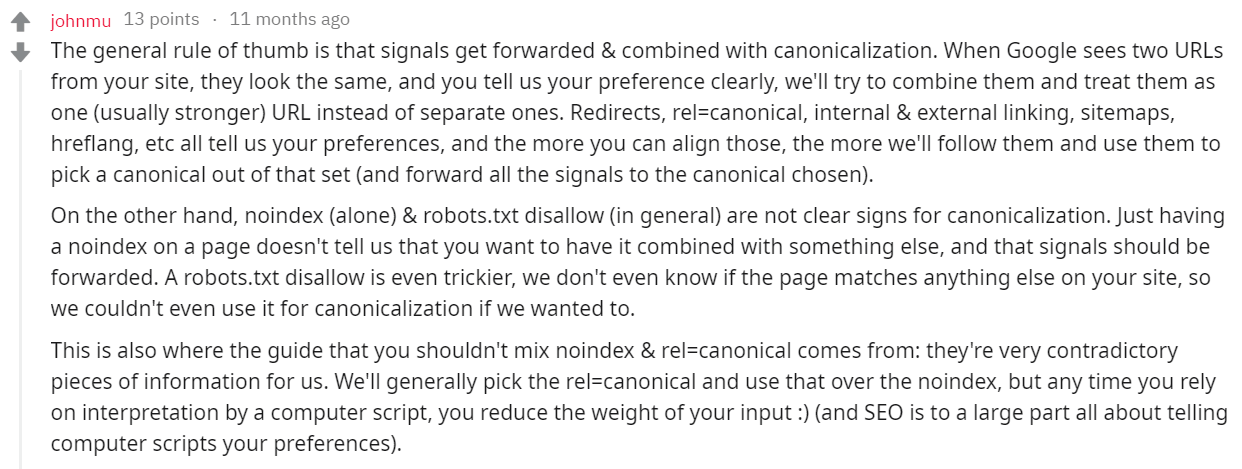Canonicalized URL is noindex, nofollow
This means that the URL in question is canonicalized, and also noindex,nofollow.
Why is this important?
The point of a canonical is to explicitly and unambiguously indicate a preferred URL. If Page A is canonicalized to Page B, the instruction to search engines is 'don't index me, index Page B instead.' However, canonicals consolidate and combine indexing signals, so if Page A has a noindex on it, this noindex may also get passed through to Page B.
As such, noindex and rel=canonical should not be used together.
Google's John Mueller offers more clarity in a Reddit thread where he answered this question at length:

What does the Hint check?
This Hint will trigger for any internal URL that is noindex, nofollow, and contains a canonical link element that points to another URL.
Examples that trigger this Hint:
Consider the URL: https://example.com/page-a
The Hint would trigger for this URL if it had a canonical URL pointing at another internal page, and robots set to noindex nofollow:
How do you resolve this issue?
This is a scenario where the canonical has explicitly been set to another URL, and the robots directives only serve to confuse search engines and/or weaken the signal. The solution is simply to remove the robots directives, so that they do not interfere with the canonical.




Recent Comments